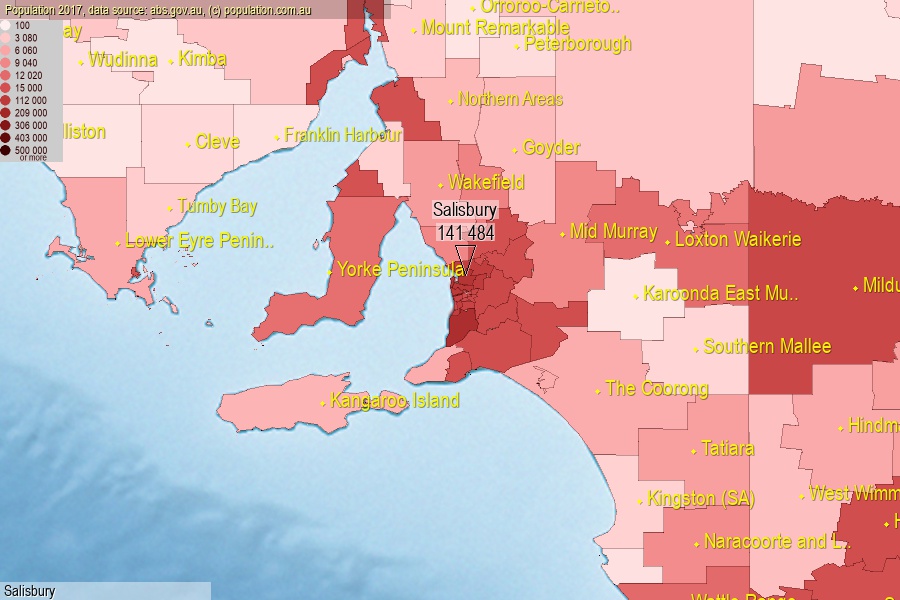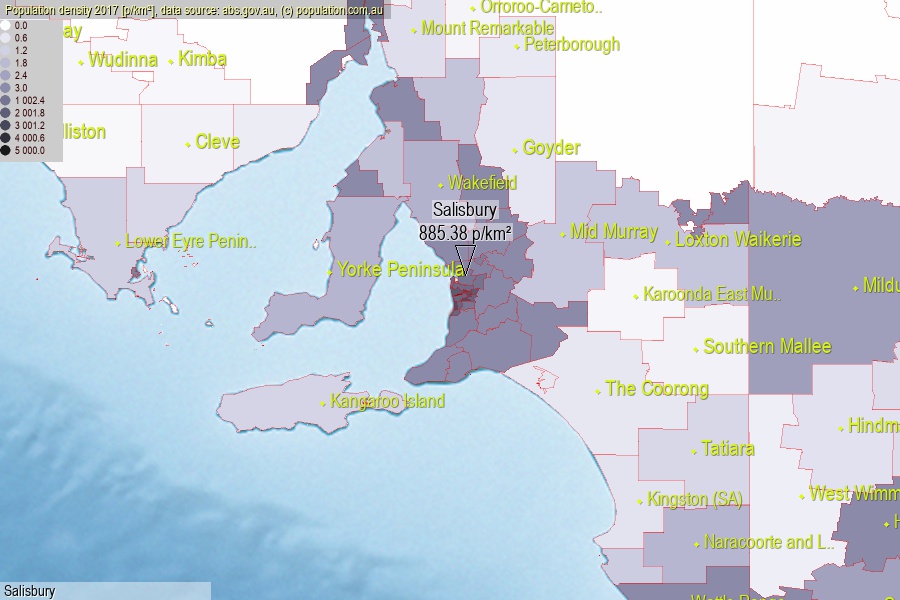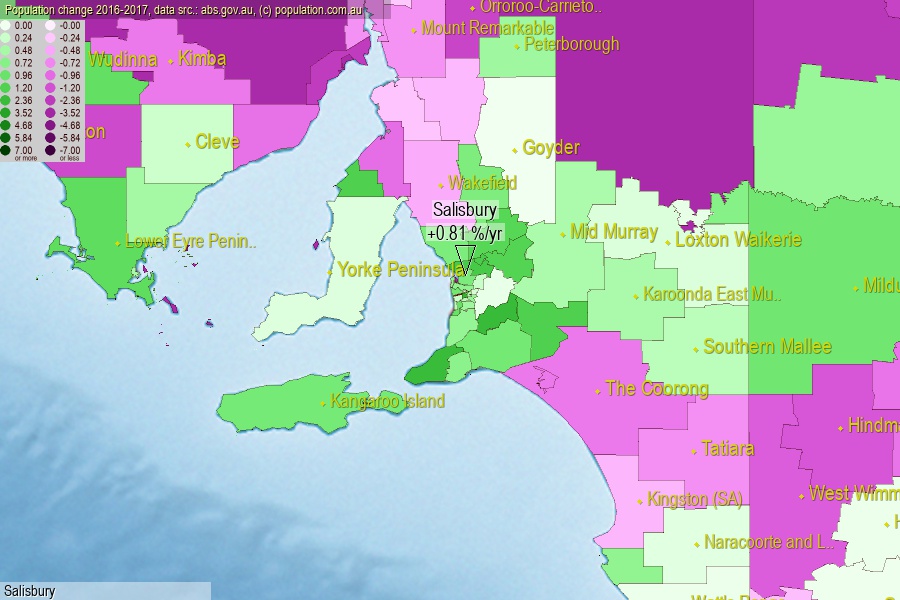 population.com.au
population.com.auLast official estimated population of Salisbury City (as Local Government Area) was 141 484 people (on 2017-06-30)[2]. This was 0.57% of total Australian population and 8.162% of SA population. Area of Salisbury is 159.80 km², in this year population density was 885.38 p/km² . If population growth rate would be same as in period 2016-2017 (+0.81%/yr), Salisbury population in 2025 would be 150 927. [0]



Click to enlarge. Salisbury is located in the center of the images.
Population [people], population density [p./km²] and population change [%/year] [2]
[1996-2001] +0.37 %/Y
[2001-2002] +0.87 %/Y
[2002-2003] +1.16 %/Y
[2003-2004] +1.22 %/Y
[2004-2005] +1.59 %/Y
[2005-2006] +1.52 %/Y
[2006-2007] +2.06 %/Y
[2007-2008] +2.01 %/Y
[2008-2009] +2.04 %/Y
[2009-2010] +1.84 %/Y
[2010-2011] +1.26 %/Y
[2011-2012] +1.13 %/Y
[2012-2013] +1.12 %/Y
[2013-2014] +1.01 %/Y
[2014-2015] +1.05 %/Y
[2015-2016] +1.19 %/Y
[2016-2017] +0.81 %/Y
[0] Calculated with linear interpolation from officially estimated population
[1] Read more about LGA and Australian Statistical Geography Standard (ASGS) on abs.gov.au
[2] Population data from Australian Bureau of Statistics (Population and density: 2017; change: 2016-2017)
[3] Digital Boundaries: Australian Statistical Geography Standard (ASGS) 2016.